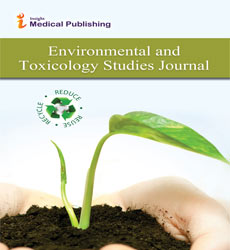Exploring toxicity induced by gadolinium ions on sea urchin embryos: Differentiation among phylogenetically distant species and focus on stress response and skeletogenesis
Abstract
Pharmaceuticals are a class of emerging environmental contaminants. Gadolinium (Gd) is a lanthanide metal whose chelates are employed as contrast agents for magnetic resonance imaging, and subsequently released into the aquatic environment. We investigated the effects of exposure to sub-lethal Gd concentrations on the development of four phylogenetically and geographically distant sea urchin species: two Mediterranean, Paracentrotus lividus and Arbacia lixula and two from Australia, Heliocidaris tuberculata and Centrostephanus rodgersii. Sensitivity to Gd greatly varied, with EC50 ranging from 56nM to 132 μM across the four species. Measures of the Gd and Ca content inside embryos showed a time- and dose-dependent increase in Gd, in parallel with a reduction in Ca. In all the four species, we observed a general delay of embryo development at 24h post-fertilization and a strong inhibition of skeleton growth at 48h. Further experiments were carried out on P. lividus embryos: RT-PCR gene expression analysis showed the misregulation of several genes implicated both in the skeletogenic and the left-right axis specification networks. WB analysis showed an increase of the LC3 autophagic marker at 24 and 48h. Confocal microscopy studies confirmed the increased number of autophagosomes and autophagolysosomes and showed no apoptotic induction. The results show the hazard of Gd in the marine environment, indicating that Gd is able to affect three different levels in sea urchin embryos: morphogenesis, stress response such as autophagy, and gene expression. Results highlight that pollution assays based on only one species can be misleading with respect to hazard risk assessment.
Open Access Journals
- Aquaculture & Veterinary Science
- Chemistry & Chemical Sciences
- Clinical Sciences
- Engineering
- General Science
- Genetics & Molecular Biology
- Health Care & Nursing
- Immunology & Microbiology
- Materials Science
- Mathematics & Physics
- Medical Sciences
- Neurology & Psychiatry
- Oncology & Cancer Science
- Pharmaceutical Sciences
